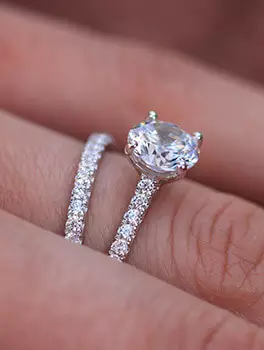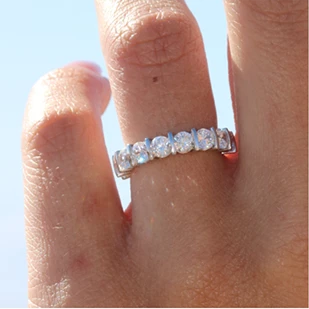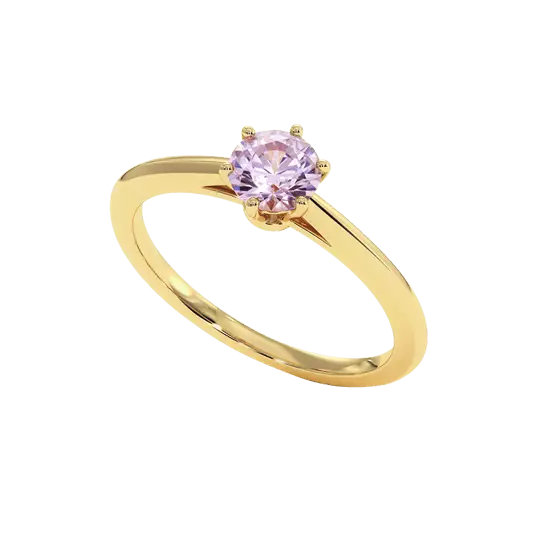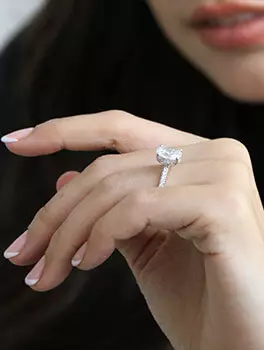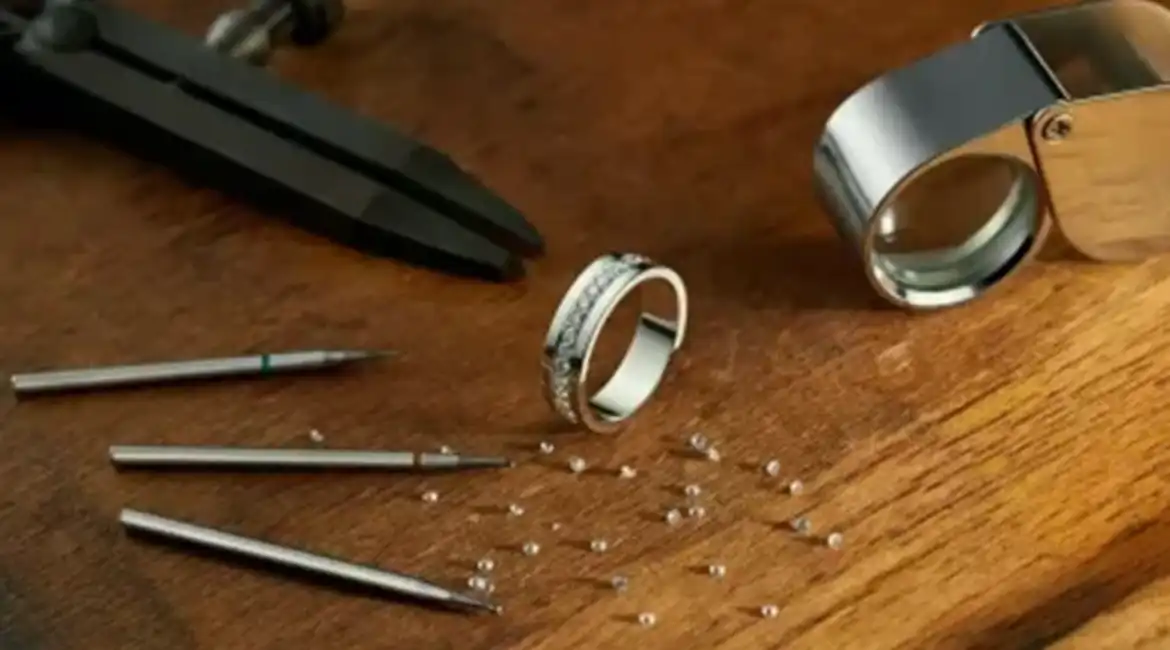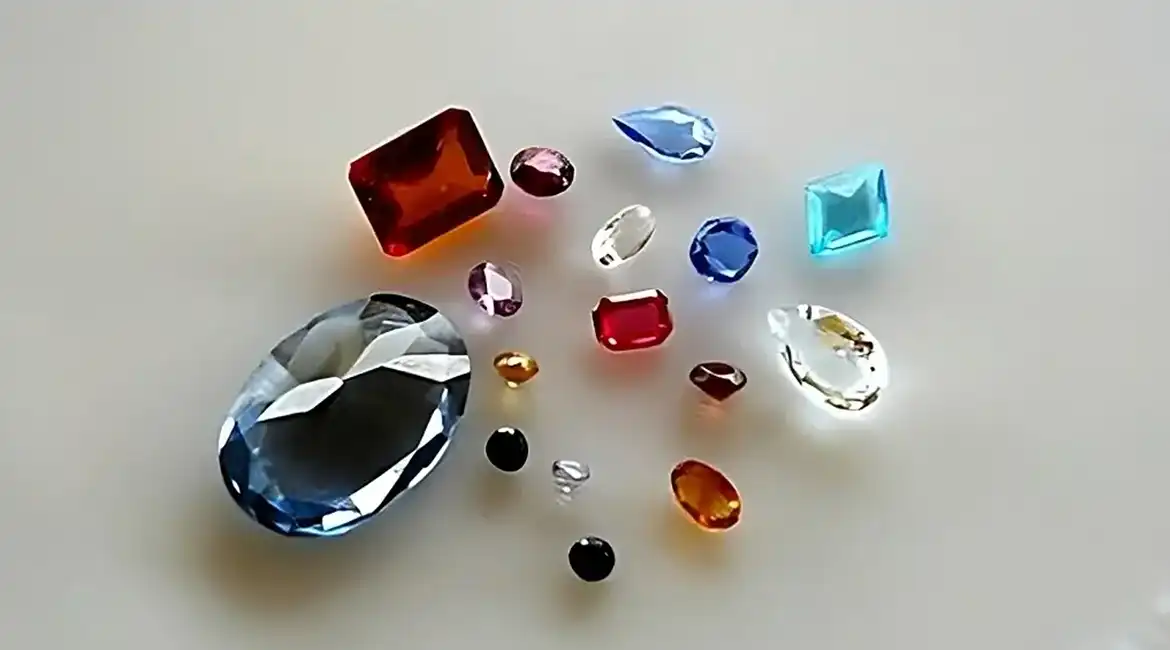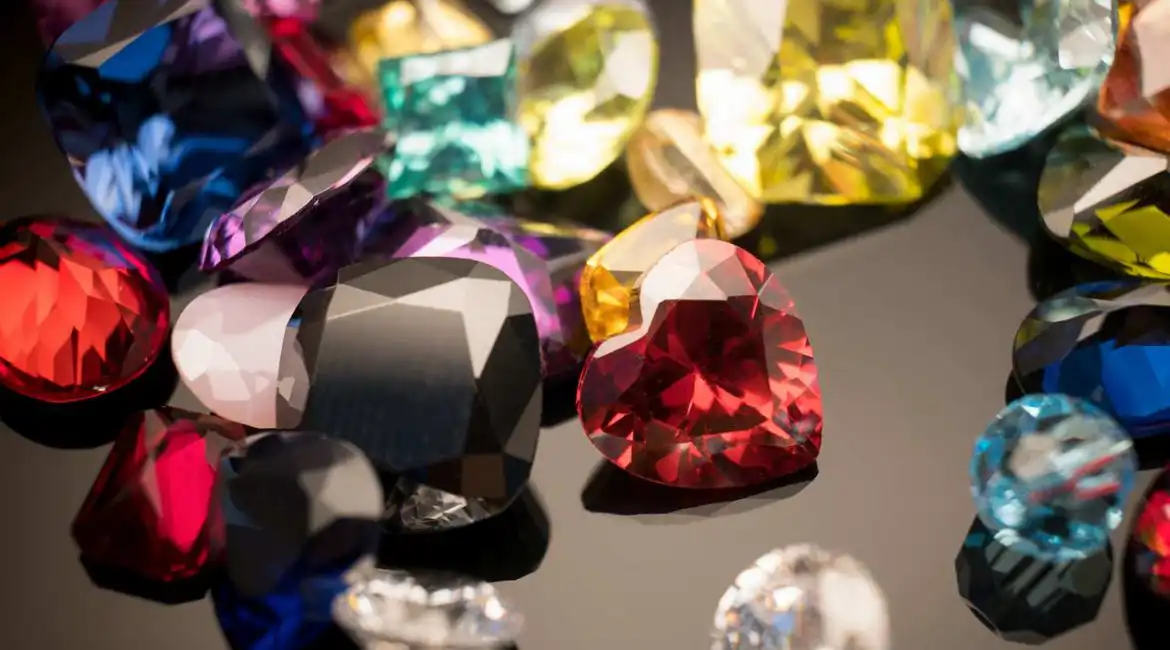Birthstones: Complete guide to the 12 precious stones
You've already heard about "birthstones" without really understanding what they are or what they refer to. In the world of gems, there are 12 birthstones. They correspond to each month of the year.
So there is a birthstone for each month (even though it's likely to find several depending on the astrological sign). What's interesting is that birthstones are not new. Their meanings, symbols, and significance are not recent. Their history is deeper, elle connects religion, beliefs, and astrology.
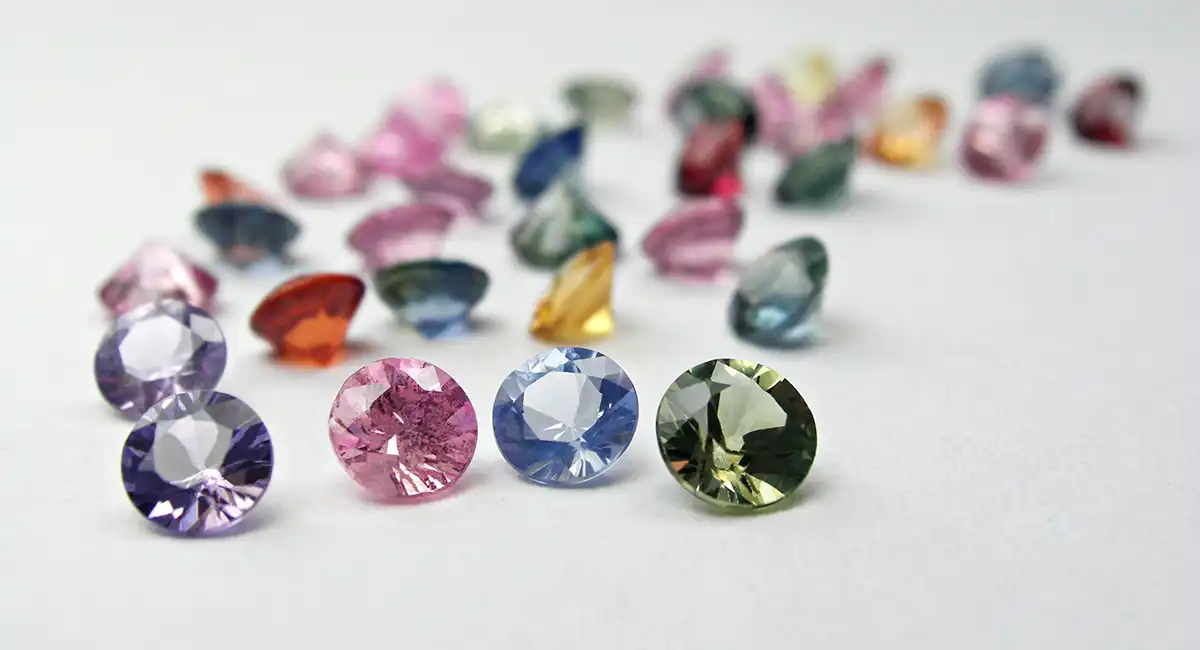
WHAT IS THE HISTORY OF BIRTHSTONES?
Their history dates back to antiquity, but the tradition of wearing birthstones began in the 18th century in Poland. The Bible mentions that in antiquity, Jewish priests wore a garment (a breastplate) decorated with 12 stones symbolizing the 12 tribes of Israel. (Fun fact: however, at that time it is not known if these were actually the 12 stones that we know today as birthstones. Indeed, it was difficult to know which stone it really was. For example, a sapphire was easily confused with lapis lazuli or apatite with tourmaline) It is not clear why the 12 stones representing the 12 tribes of Israel became birthstones. Actually, this relationship was born with the world of astrology. It is thanks to two men and their writings that the connection between the 12 stones of the breastplate and the twelve signs of the zodiac took place. These two men are Flavius Josephus (1st century AD) and Saint Jerome (5th century AD).
WHY ARE BIRTHSTONES SAID TO BE MAGICAL?
The idea is that each of the twelve stones has special powers in relation to the astrological sign. Wearing these stones at opportune times would have talismanic and therapeutic benefits. In the Middle Ages, spirituality and beliefs in the virtues of gemstones were at their peak. Lords wore different stones each month to take advantage of their powers. Today the twelve gems are most often associated with each month of the year.
SINCE WHEN?
It was in 1752, with the creation of the first calendar that each month was assigned a precious stone. The concept of birthstones was born. The arrival of Jewish gemstone merchants in Poland in the 18th century allows the tradition of wearing a stone corresponding to one's birth month. However, the "official" and modern list of these stones is defined in the 20th century by the National Association of Jewelers in the United States. Since then the stones have always been the same despite some changes such as the addition of a stone. (Fun fact: with astrological signs (Chinese and zodiac) each person has at least two or three birthstones, it gives you a choice!)
WHAT ARE BIRTHSTONES AND WHAT IS THEIR MEANING?
JANUARY BIRTHSTONE
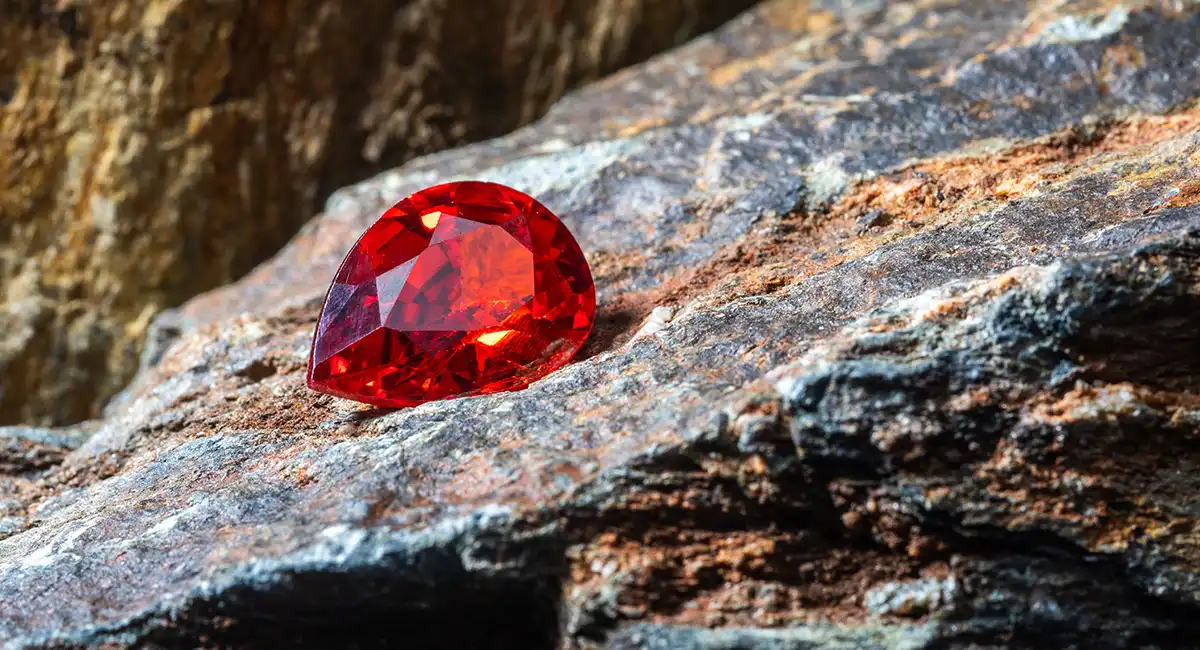
For the first month of the year, the main stone attributed to it is the garnet since the Middle Ages. Linked to blood by its intense red color, its power had virtues to heal wounds or blood diseases. Elle notably protected against snake bites thanks to its protection against venom.
This red gem was once called "carbuncles", a name derived from Latin meaning "small ember". The name "Garnet" could also come from the color of the pomegranate (fruit).
Today its virtues are strength, loyalty, courage, truth, self-confidence and energy. The traditional color of garnet as a birthstone is red. But its color is actually variable. In nature, garnets of all colors are found, ranging from yellow to green and even black. However, it is impossible to find a natural blue garnet. If you want to benefit from the virtues of this gem, it must be red.
The garnet provides a feeling of well-being, boosts energy and wards off nervousness. In love, the garnet rekindles passions. (Fun fact: a jewel with a garnet is a perfect gift for Valentine's Day).
As a reminder, depending on the months there can be several birthstones. This is the case for the month of January. Tsavorite is also a January stone. In reality, it is a green garnet which explains why elle is also a birthstone of this month. Its name is derived from Tsavo Park in Kenya, it is a highly sought after stone. Tsavorite symbolizes abundance and prosperity, elle provides what nature gives us. Elle is intimately connected to nature and its color only affirms this link.
The Garnet comes from different regions of the world such as India, Kenya, Nigeria or Tanzania.
THE LITTLE HISTORY OF GARNET
The red variety of Garnet is probably the best known. Famous since time immemorial, this gem is mentioned in ancient tales as in Greek mythology for example. Symbol of loyalty, truth but also light, the Garnet is mentioned as such in Jewish and Muslim traditions.
The virtues of Garnet are not the only reasons for its fame. These stones are of incomparable beauty and were worn by the Vikings as funerary ornament to guide the dead to Valhalla. In Europe, in the 18th and 19th centuries, Garnet was at the height of its fame.
THE CHARACTERISTICS OF GARNET
Even if they are different colors, all varieties of Garnet have the same crystalline structure and the same chemical composition (aluminous or calcic silicates). The very wide variety of colors is due to the different chromophores (chrome, magnesium, iron...). This allows the stone to have nearly forty different colors: green, yellow, pink, brown... Each Garnet has a different name depending on its color (we saw it with Tsavorite). (Fun fact: there are two kinds of green Garnet, Tsavorite and Demantoid Garnet discovered in 1855)
THE MAINTENANCE OF GARNET
All Garnets should be kept away from extreme temperatures. Indeed, a thermal shock would cause damage to the stone.
FEBRUARY BIRTHSTONE
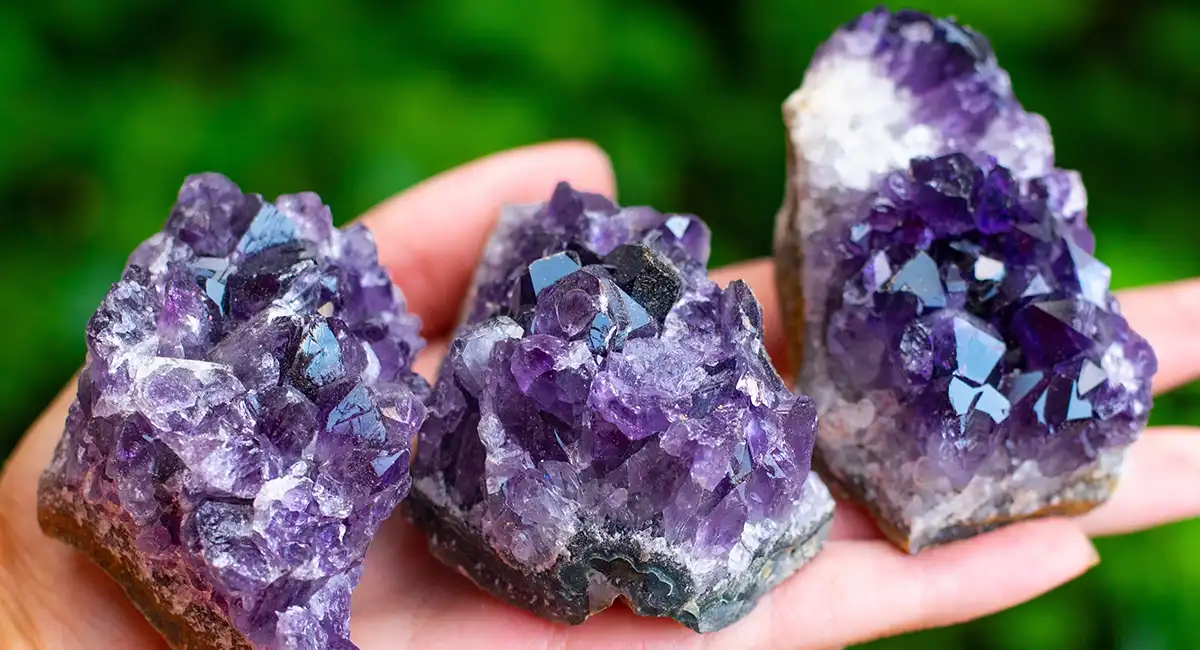
The Amethyst is the birthstone of the month of February. According to legend, this purple stone connects humans to the Divine. It is a meditation stone that brings inner peace and also clarity on situations, but its virtues do not stop there., elle would prevent bad dreams and negative thoughts.
Since Antiquity, Amethyst is believed to protect humans from the effects of drugs or alcohol, quite a good remedy for hangovers. During this period, it was common to drink from amethyst glasses, which would prevent the harmful effects of alcohol.
The virtues of Amethyst are calmness, fullness, concentration, and serenity.
Contrary to the month of January, Amethyst is the only birthstone for the month of February. Amethyst comes from the Greek word "Amethystos" which means "protect against drunkenness". Amethyst is actually a variety of macrocrystalline quartz, which means thatelle is composed of large crystals. Amethyst is simply the name given to purple quartz. For example, a yellow quartz is called a citrine, but a pink quartz is called a rose quartz. The birthstone for the month of February is not always purple, elle varies between transparent pink and dark purple. The chromophore element that colors this gem is iron.
This stone is found on all continents and its origin determines its characteristics. elle it has different functions. The Amethyst from Uruguay is famous for its beauty. The Amethyst from Brazil is very abundant. The Amethyst from Siberia has a particularity about its color, indeed elle is a deep purple. However, we can't find it anymore., elle belongs to the past but many use the term "Siberian Amethyst" for an Amethyst with intense purple even if elle does not come from Siberia.
THE LITTLE HISTORY OF AMETHYST
There is a story about the creation of this divine colored stone. This story comes from the God of wine called Dionysus by the Greeks and Bacchus by the Romans. This God was, so to speak, the "bad boy" of Ancient mythology. Dionysus's mission was to put an end to sorrows and pains but in love with his power and drunkenness after a few glasses of wine, he was the author of misdeeds. One day, Dionysus, drunk, was offended by a mortal. He then swore to take revenge on the first human he would meet. Amethyst, a beautiful and innocent young girl, was the first person to cross the path of the drunken God. He flew into a black rage and decided to attack her with the help of two hungry tigers. Artemis, Goddess of the wild nature, hunting, and childbirth, seeing this unfair scene, transformed Amethyst into a quartz statue. The young girl, protected from drunkenness, could not be reached by Dionysus. The latter, even more angry, collapsed on the ground, spilling his cup full of wine. Thus, drops landed on this pure quartz statue, giving birth to the divine color of the Amethyst.
The Amethyst is attributed with a great deal of supernatural powers, it is said thatelle can heal all ailments. Great names in history attribute powers to it. Leonardo da Vinci awards this stone the virtue of dispelling bad thoughts and refining intelligence.
Pliny the Elder (a Roman historian and author of the world's first encyclopedia) refers to Amethyst as a protector against witchcraft and would bring aid to those seeking the favor of princes. (Fun fact: he said that its powers "activated" if the name of the moon or sun was engraved on an amethyst and it was worn as a pendant on a necklace).
The Amethyst has always been a symbol of power, which is why kings and queens, as well as pharaohs and even Roman emperors, wore this divine color.
Due to this fame and heritage, a sign of power and prestige especially among the Catholic clergy of the Middle Ages, this stone was attributed with the property of promoting chastity. Bishops still wear amethyst rings today.
THE CHARACTERISTICS OF AMETHYST
The Amethyst is popular for its color, elle is therefore the most important criterion. Its color also determines its value. For example: the highest prices are attached to amethysts with a very intense color. The stone must be of a transparent and pure violet, sometimes dark but not tending towards blue or red, even if these flashes of color are still sought after.
It is almost impossible to see an inclusion (internal characteristics of the stone related to its crystallization) with the naked eye on an amethyst. Moreover, this stone has very few inclusions. Elle It is also highly appreciated by stone cutters, so you can find it in various shapes and sizes. The important characteristics for deciding the price of an amethyst are its color and its shine.
THE LITHOTHERAPY OF AMETHYST
Lithotherapy is a healing method using stones. Amethyst is believed to have this power. Just like its virtues, elle is recommended in lithotherapy to combat addictive substances: cigarettes, alcohol, drugs or even coffee. It is a stone with "anti-anxiety" virtues. elle is supposed to bring fullness and well-being. The Amethyst can also be placed in a room in your house, which would help to purify the house and also promote your sleep. Lithotherapists say that this action will allow you to sleep more easily and for longer.
THE CARE OF THE AMETHYST
Exposed to excessive brightness, some varieties of Amethyst run the risk of their color fading.
BIRTHSTONE OF THE MONTH OF MARCH
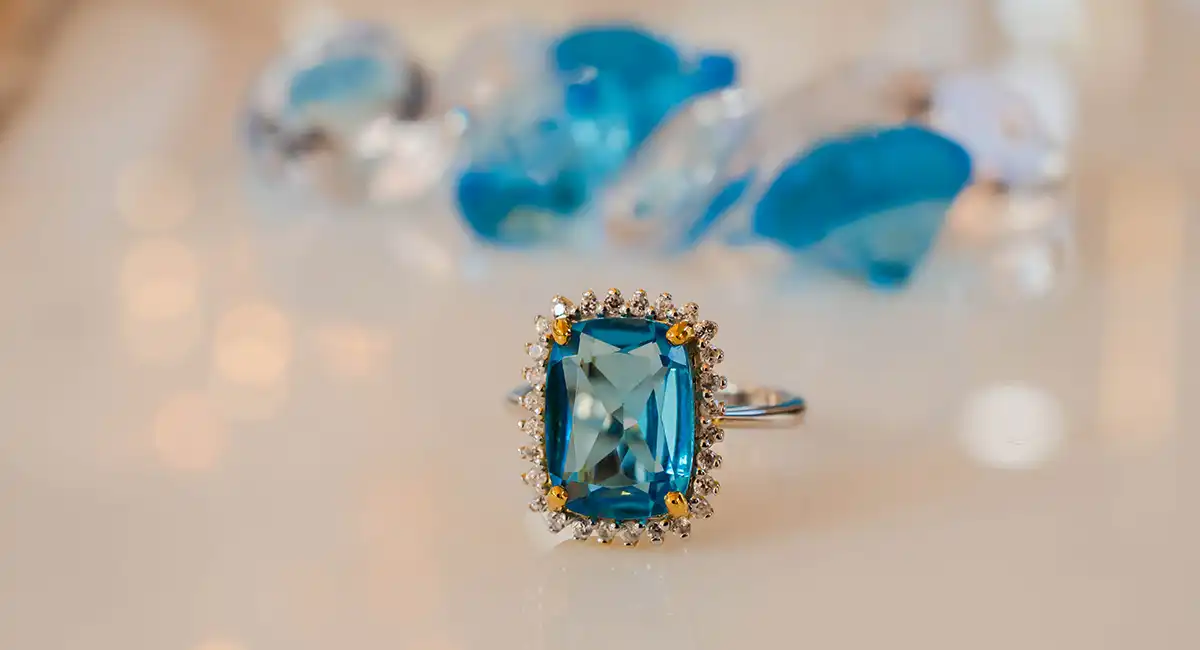
The stone of sailors is the birthstone of the month of March. This gem is the Aquamarine. It is named so because it is believed to have the power to protect sea travelers from various dangers. Its unique color in the world gives it purifying virtues according to the Ancients. It would also protect lovers and it would bring creativity.
Aquamarine gets its name from Latin, Aigue comes from "aqua" which means "water" and Marine comes from "marinus" meaning "from the sea". Its name was given to it because of its color which refers to a soothing and unique blue. The virtues of the birthstone of the month of March are calm, youth, serenity and hope. Apart from youth, these three virtues are required and indispensable qualities for sea travel.
Aquamarine would help respiratory problems it acts on the "throat chakra" which also takes into account inner and outer communication. In addition, this blue stone facilitates letting go and the relationship with others is healthier. The birthstone of the month of March also acts on the "heart chakra". Indeed, it would bring love, comfort and tenderness. It is an ideal stone for couples it allows to rise above conflicts and to strengthen self-esteem. Worn as a pendant it would be a lucky charm and would bring joy to couples.
THE LITTLE HISTORY OF AQUAMARINE
Greek and Roman mythology both speak of this stone. Its color is associated with the movements of the waves, it had the role of protecting Men during their maritime journeys. But Aquamarine protected these travelers from the God of the sea and oceans: Poseidon. For the writer of the very first encyclopedia, Pliny the Elder, this stone would come from the buried treasures of the mermaids. This gem is of an incomparable clarity and transparency, that's why in the Middle Ages it was used for the making of crystal balls. Aquamarine would also help mediums to read the future because it would have clairvoyance properties. (Fun fact: Aquamarine is the stone that is given for the 23rd wedding anniversary).
In Chinese beliefs, Aquamarine would come to the aid of the unlucky and the sick. It would be linked to Kuan Yin who is the Goddess of compassion, pity and protector of children.
In the Middle Ages, poisonings were frequent. Wearing this stone allowed to avoid being poisoned. The healing virtues of the stone were also used: Aquamarine was soaked in water for several hours to serve as a remedy for eye problems or hiccups.
Brazil is the largest producer of Aquamarine even though this stone is found on all continents. (Fun fact: there are Aquamarine minerals in France! In Brittany, in Limousin and in Auvergne).
THE CHARACTERISTICS OF AQUAMARINE
This stone is part of the Beryl family. It is actually a simple blue Beryl. It's just that we use the name Aquamarine for this uniquely colored stone. The chromophore element of this stone is iron.
The color of Aquamarine varies from transparent blue to a deep blue-green. Jewelers appreciate this gem the most when it is lagoon blue. In its chemical composition, Aquamarine has silica, aluminum, beryllium, iron and also copper. It is a fairly hard stone.
THE LITTLE HISTORY OF AQUAMARINE
It is a gem that is used directly on the body. Elle helps to heal and relieve coughs, elle reduces respiratory problems and soothes the vocal cords. A delight for singing enthusiasts! But elle doesn't just act on the chest, elle can calm migraines and eye pain. With its primary power of warding off dangers at sea, elle also helps to combat seasickness. If you suffer from this ailment, you should wear an Aquamarine bracelet and it will prevent you from vomiting or having stomach aches. (Fun fact: elle can also be used for car and bus travel sickness).
According to lithotherapists, if you dip an Aquamarine in water you will get a miracle remedy to apply directly to the skin against eczema and skin eruptions or against acne.
MAINTENANCE OF AQUAMARINE
Aquamarines generally do not require special care. They are resistant and can withstand daily wear and tear. But elle can become dull or cloudy, in these cases, the best way to regain its shine is to soak it for a few minutes in warm water with a few drops of dish soap.
BIRTHSTONE OF THE MONTH OF APRIL
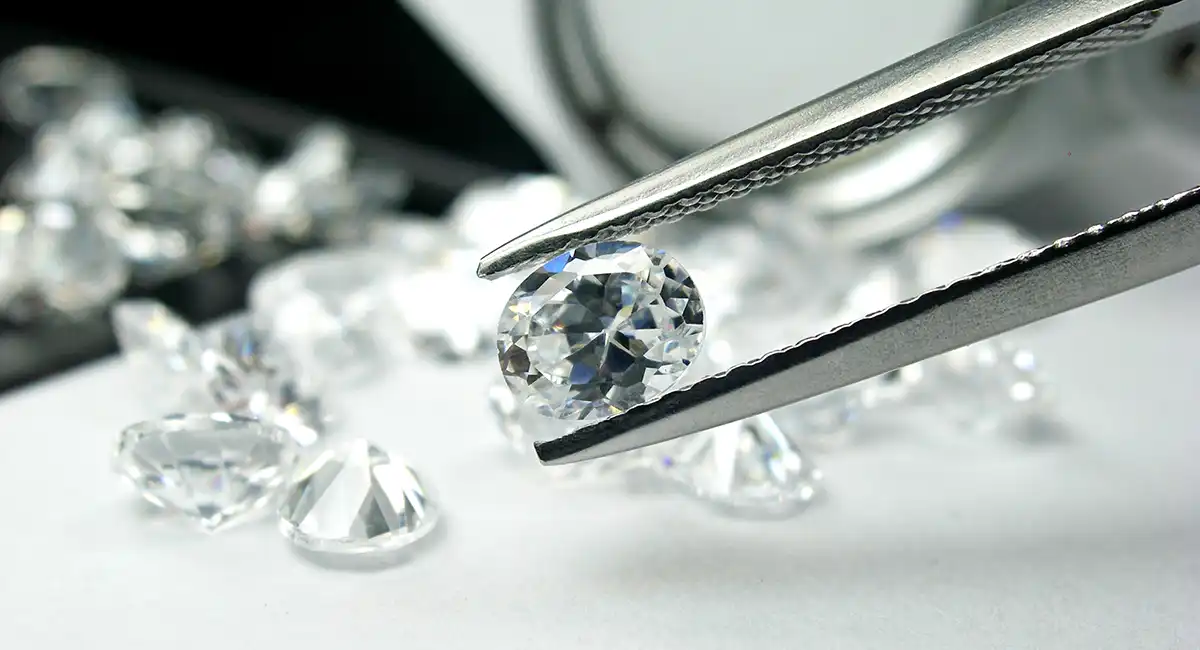
The White Sapphire is the birthstone for the month of April. This stone is part of the corundum family. Elle is often confused with the diamond. Sapphires are generally blue but can vary from colorless to light blue. Symbol of freedom and purity, the white sapphire brings wisdom and strength of mind. The virtues associated with white sapphire are calmness, concentration of mind, open-mindedness, and joy. The sapphire is a precious stone whose hardness is estimated at 9 on the Mohs scale. Elle can scratch all minerals except the diamond which is the hardest mineral that exists on Earth. The name corundum originates from an Indian word "Corundum" which is assimilated to massive and opaque stones of a dull color.
This stone is popular under the name of "Leucosaphir", elle is the purest form of corundums. The white sapphire owes its absence of color to the chromogenic elements that are missing in its composition. It is often used as a substitute
for diamond because it is cheaper. White sapphire is found in most corundum deposits but it is rare to find it of gem quality. The main deposits of white sapphires are located in Myanmar, Thailand, and Sri Lanka.
THE LITTLE HISTORY OF WHITE SAPPHIRE
White sapphire is part of the corundum family. From Antiquity to the Middle Ages, the blue sapphire was confused with lapis lazuli. It was not until the beginning of the 19th century that these two gems were distinguished. Today the name sapphire refers to all stones in the corundum family except the red ones which are called rubies. (Fun fact: if we call a stone sapphire, the stone is then blue. If the corundum is white then it is a white sapphire).
There is no legendary and historical information about white sapphire. It is possible in history to have confused clear and colorless corundum with diamonds or even rock crystal (colorless quartz) which were widely used in Antiquity.
It is then difficult to have historical evidence and myths related to this exceptional stone. We know that elle is historically the birthstone for the month of April and is also the stone of the Taurus sign as a zodiac gem. Today you will certainly see other stones called birthstone of this spring month but the real one is the white sapphire.
THE CHARACTERISTICS OF WHITE SAPPHIRE
This stone has gained popularity in recent times. Elle looks so much like a diamond that elle often replaces it on engagement rings. Indeed, it is a perfect substitute for its appearance similar to diamond. White sapphire is also ideal for people who have smaller budgets, it is cheaper than diamond. (Fun fact: the White Sapphire is traditionally given for the 16th wedding anniversary).
White sapphire also has the same characteristics as diamond: it disperses light and has few inclusions. These make this stone a stone of choice in jewelry.
THE MAINTENANCE OF WHITE SAPPHIRE
Sapphire is a resistant stone but given its preciousness, it is still necessary to be careful when cleaning it. Therefore, avoid chemical products, you can clean the sapphire with a steam cleaner and also by ultrasound.
BIRTHSTONE OF THE MONTH OF MAY
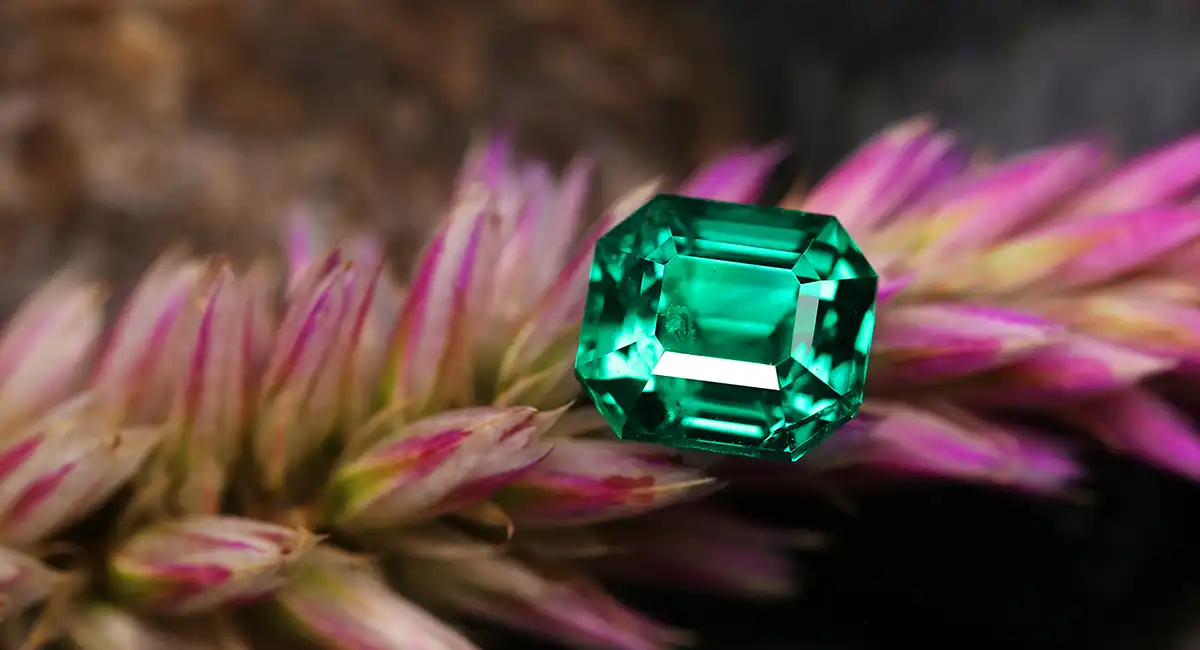
The Emerald is the birthstone of the month of May. This stone with its unique and inimitable color is often associated with the Holy Grail but also with Cleopatra. Why? Well, elle distributed portraits of himself to his high dignitaries.elle engraved on emeralds. This gemstone is said to promote friendship and strengthen great love. (Fun fact: an emerald necklace or ring strengthens love in a couple).
The virtues of this stone are calmness, serenity, protection, youth, and wisdom.
The Emerald would allow its wearer to maintain their youth for longer, but not forever! This is why Cleopatra loved this gem.
The name of this stone comes from the Greek "smaragdos" which means "green precious stone". Be careful, this term was used for all green gems until the 18th century, it's the same for ruby and sapphire: all blue stones were called sapphires and all red stones were called rubies.
The birthstone for the month of May is part of the Beryl family and elle So it is part of the same family as the birthstone for the month of March: Aquamarine. The chromophore element of the Emerald is chromium, vanadium, and iron. It is the mixture of these elements at different concentrations that allows us to obtain this unique color. The Emerald can be pastel green but also intense green with shades of blue, gray, yellow or brown.
This gem can be found in different countries. The deposits in Egypt are exhausted. Since the 16th century, the Colombian Emerald has replaced the stones of Egypt. The Conquistadors imported this delicate and unique gem to Europe where elle will be appreciated by all. It is the largest emerald deposit in the world. The second is located in Zambia and was discovered in 1931. There are also other deposits in other countries: Pakistan, Russia, Zimbabwe, and Afghanistan.
THE LITTLE HISTORY OF THE EMERALD
Scientists believe that the emerald mines of Egypt may have existed as early as 3500 BC. They were rediscovered by Frédéric Cailliaud in 1816, who was a French mineralogist and explorer. Therefore, it can be concluded that as early as the time of Alexander the Great, Greek miners were already extracting emeralds.
Cleopatra's weakness for emeralds, the last pharaoh, led to the creation of sumptuous jewelry but also the production of portraits.elle engraved on an emerald. It can then be understood that for the Egyptians, emeralds were much more than just a simple stone, they actually represented the embodiment of national pride, a strong symbol for this country. These Egyptian deposits are called the "Cleopatra's emerald mines" even though they were discovered long before the birth of the pharaoh.
THE CHARACTERISTICS OF THE EMERALD
Just like a diamond, there are 4 very important criteria for choosing an emerald. They are the purity of the color, the brilliance, the clarity, and the transparency. It's the color that makes the whole stone, so it's a characteristic not to be overlooked.
SO HOW TO CHOOSE ?
The emerald should not be too light or too dark, you have to find the right balance. It should not also be thatelle be too green or too blue elle must be a perfect blue-green tone! The light of the stone is also important., elle It can be tender, warm, fiery, or silky. The inclusions of an emerald are easily visible to the naked eye, especially if the inclusions are large. The gem has characteristic inclusions that are called "Gardens". The inclusions will have an impact on the value of the stone, but for the emerald, visible inclusions are tolerated. The lapidaries (precious stone cutters) are trained and know how to cut and set the stone so that the inclusions disappear or are not visible.
THE MAINTENANCE OF THE EMERALD
This rare stone must be cleaned very delicately. Its characteristics and composition should not be altered. The presence of inclusions is normal, so there is no need to try to remove them.
For cleaning, it needs to be as simple as possible or it is suitable and sometimes recommended to bring your jewelry to a specialist who will know exactly how to clean it.
JUNE BIRTHSTONE
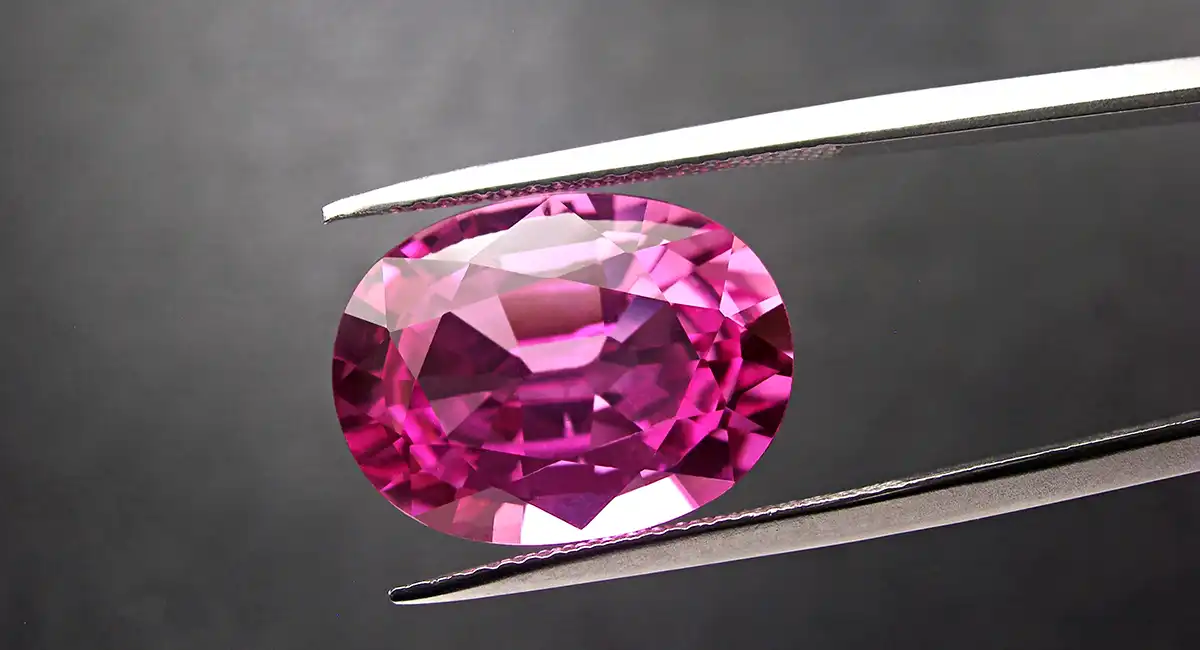
The Pink Sapphire is the birthstone for the month of June. Its radiant and incomparable pink makes this stone a precious and appreciated jewel. This stone is a symbol of beauty, wisdom, purity, and love.
Pink sapphire is part of the corundum family. The name "sapphire" is derived from the Greek word "sappheiros" meaning "blue". The blue sapphire is one of the most well-known stones in the world. However, few people know that sapphires come in all colors! Moreover, all these colors have the same properties as the blue sapphire and are often cheaper.
The virtues associated with Pink Sapphire are wisdom, purity, love, and beauty.
This stone is adored for its color. In the past, many believed that the pink sapphire could bring honesty, happiness, and loyalty. In Asia, this stone is highly appreciated because its color is close to that of the lotus flower, which is a real symbol in Asian culture.
Pink sapphires are found in Madagascar, Burma, East Africa, or Sri Lanka.
THE LITTLE HISTORY OF THE PINK SAPPHIRE
Before the 90s, this stone was considered rare. But the opening of deposits in Madagascar allowed this gem to spread worldwide. Pink Sapphires gained popularity thanks to Queen Elizabeth II. Indeed, she owns a flower-shaped brooch whose petals are set with diamonds and in the center is a splendid pink sapphire. Grace Kelly, the famous American actress loved these stones and many jewelers still draw inspiration from her floral jewelry adorned with pink sapphire.
Given the past difficulties in differentiating all the stones. These pink corundums do not have legends or myths associated with them. These sapphires were often misidentified and confused with other stones of the same color.
THE CHARACTERISTICS OF THE PINK SAPPHIRE
Pink sapphires are often heat-treated to eliminate unwanted color tones but also to reduce the stone's irregularities. After treatment, the stone has a silky luster and better clarity. Corundums do not have, unlike diamonds and their 4C of precise criteria validating their beauty. They are then classified according to their quality and color. The choice of pink sapphire is according to your tastes. All pink sapphires will not be the same color, there are different tones like the padparadscha sapphire which presents a pink-orange color that equals no other color.
Rubies are also corundums, rubies are red corundums. There is currently a debate about the naming of sapphires that are pink-red. Should we call them rubies? Or sapphire? This question is pending. And to tell the truth, it depends on people, it's up to your preferences.
THE MAINTENANCE OF THE PINK SAPPHIRE
The hardness of the Sapphire is the second hardest in the world! First, there are obviously diamonds. It is therefore very difficult to scratch a sapphire. But this gem is sensitive to thermal shocks and chemicals. Therefore, you should avoid wearing the stone when you clean or cook.
JULY BIRTHSTONE
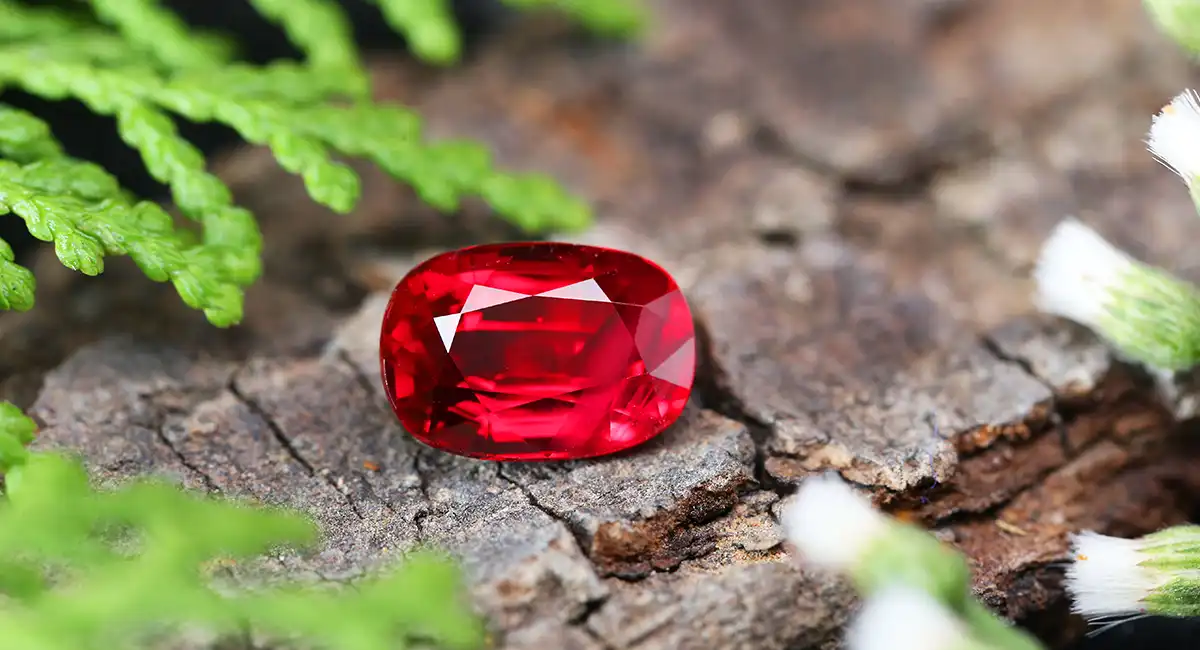
The birthstone for the month of July is the second stone of the year to be red. It is the ruby. Its intense and fiery color is the very symbol of passion. This gem has been worn as a lucky charm and used to ward off bad luck for centuries. It was often worn by soldiers (on swords or shields) in order to bring them luck and success in their battles.
The ruby is known for bringing perseverance, elle gives courage, willpower and confidence. But elle is also a strong symbol of love and passion. That's why many engagement rings have a ruby. The virtues of the July stone are luck, protection and love.
Ruby comes from the Latin word "Ruber" which is actually the etymological root of "Red". Before the arrival and development of scientific gemology all red stones were called Rubies even though they could for example be another stone like garnet. In antiquity, red stones were called "Carbunculus" which means "Small Coal". And among the Ancient Greeks they are famous under the name "Anthrax" which means "Burning Coal".
These two names refer to coals because of its bright red color when seen against an intense light source. It then recalls the intense and deep red of gems (Ruby, Garnet or Spinel).
The ruby is part of the corundum family. Corundums are rubies and sapphires. These stones are allochromatic minerals, in their raw state they are colorless. So why are they red, blue, yellow, pink? Because of chromogenic elements that are added to their chemical composition! So they become colored. The Sapphire (a sapphire is a blue stone) is colored by titanium and iron while the ruby is colored by chromium and iron.
The ruby is essentially red but it contains secondary colors like purple, pink or orange. Be careful, "colored" sapphires exist with shades of pink or orange, they are not rubies but Padparadscha Sapphires or Evening Red Sapphires. Rubies are red.
The oldest origin of rubies is that of the rubies of Sri Lanka known by the Greeks and Romans (480 BC). But the classic origin of rubies is the one found in Myanmar. This is a source that is now exhausted but it is in this place that the most beautiful rubies in the world have been found. A ruby that has an exceptional color and transparency will be a "Pigeon Blood" ruby. Today there is still a deposit in Myanmar, it is a country intimately linked with these stones so much so that the kings of Burma (old name of Myanmar) were called the "Lords of Jewels". Other countries in the world have ruby deposits such as Afghanistan, China, India, Cambodia, Kenya, Madagascar, Pakistan, Thailand...
THE LITTLE HISTORY OF THE RUBY
The King of Precious Stones, nickname of the ruby, embodies passion, romance and love and has done so since time immemorial. This gem is also associated with many myths such as the ancient Indians who, looking at the ruby, saw an eternal fire and thus could grant them longevity. In the Middle Ages, this stone was believed to have prophetic power. It was thought that elle darkened to announce an impending disaster. This was not its only "asset", the ruby brought luck in games.
The Burmese wore the ruby as a talisman that protected them from accidents, injuries and illness. They said that the ruby was actually a drop of blood from the Earth.
THE CHARACTERISTICS OF THE RUBY
What do you think is the rarest stone? The diamond? The emerald? It is actually the Ruby, this gem is rarer and much more expensive. Like all stones, the purer the color, the harder they are to find. Remember that rubies have secondary colors and finding a 100% red ruby is very complicated. Each ruby, even a ruby comprising 90% red, will have a secondary color which can be pink, purple, purple or even orange. We then say that the stone is dichroic (two colors).
A pure red ruby is very rare, but so is finding a ruby without inclusions! Chromium (chromogenic element) is responsible for the appearance of these inclusions during the crystallization of the stone (be careful, it is not the only factor). Sapphires generally have fewer inclusions than rubies. Inclusions should not be seen as defects, sometimes they are there to show and highlight the beauty of the stone. This is the case for ruby. Some rubies have microscopic inclusions of titanium and this will occasionally enhance the play of light inside the stone and thus increase its value and enhance its beauty.
RUBY MAINTENANCE
Rubies, unlike emeralds for example, can be cleaned by steam or ultrasound. It is the second hardest stone after diamond. However, be careful if your ruby has been "enhanced" with the hand of man, that is, if gaps, cracks or fractures have been filled, this will make your stone sensitive to heat and scratching.
AUGUST BIRTHSTONE
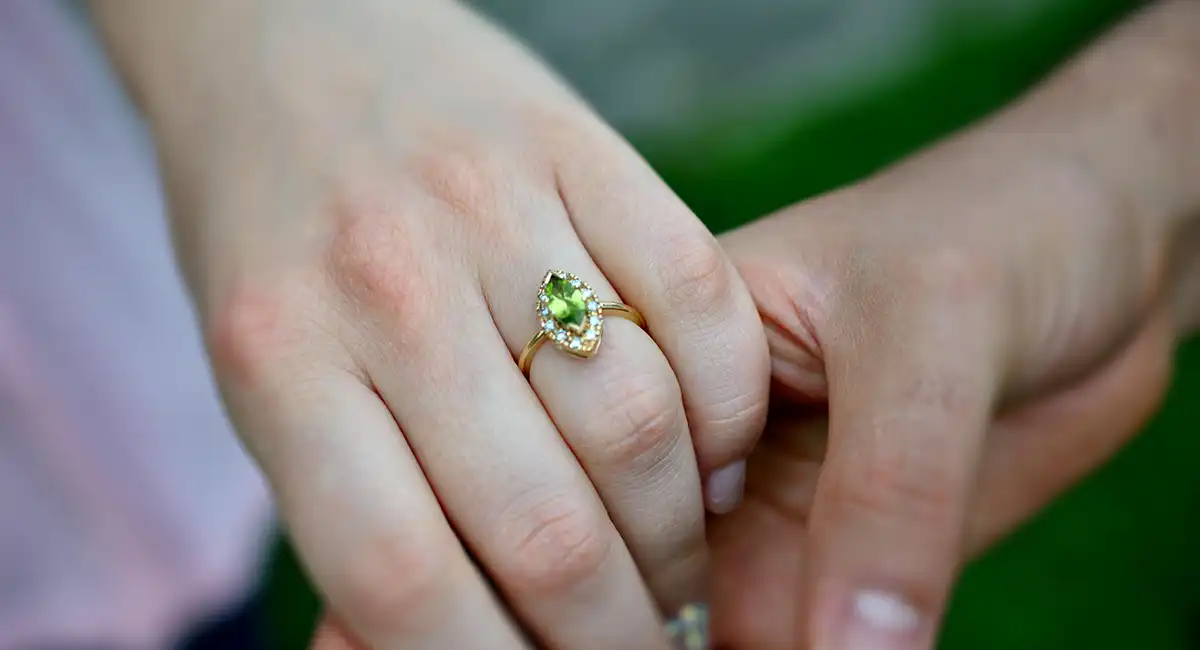
Peridot is the birthstone for the month of August. This stone is a symbol of protection, used by pirates on their voyages. But it also plays a role in medicine. The Egyptians used peridot for healing, so it has healing properties and virtues, they considered this gem as the stone of the Sun. This stone would be the remedy for heartaches and would ward off the evil eye.
The virtues associated with peridot are self-confidence and inner peace.
Peridot is of a pretty light green color, it is said that Cupid's arrows were cut in peridot.
Peridot comes from the Arabic "Faridat" which means "precious stone". But its origin is not certain because the name of this gem could also come from the word "Peridote" (old English) which means "bright spot". For its color, peridot has often been called Olivine or Chrysolite. Indeed, the means of identifying gems only began in the 18th century, so two stones could easily be confused. The birthstone for the month of August only exists in shades of green and is described as idiochromatic. The chromogenic element that colors this gem is iron, the green color is also enhanced by chrome or nickel. Peridot is a silicate.
There is a particularity in certain stones or rather an effect, it is the cat's eye. This is the case with peridot! But this phenomenon is extremely rare for this stone. This effect manifests itself on the surface and gives a certain chatoyance in the form of a beam. This is possible thanks to fine needle-shaped inclusions so the light reflects on the stone and gives a "cat's eye" effect.
You can easily see the effect in this photo. You should know that the "beam of light" will move if the light also moves. We can also understand why this effect is called that, it looks like a cat's eye.
It was thought that peridot was found in only one place in the world in antiquity: on the island of Saint John (island of the Red Sea). Other deposits will be discovered, they now offer the most beautiful peridots in the world: the peridots of Kashmir. These deposits are located in Arizona, Pakistan or China.
(Fun fact: the peridots of Kashmir are beautiful because they have an intense green and shine a lot. These stones are highly sought after. However, the mine in which they are found (region of the Himalayas in north-west Kashmir) cannot be exploited all year round due to climatic conditions. The exploitation is only from June to September. This makes the availability of these stones extremely limited) We then notice that this stone is not found everywhere unlike the stones seen previously.
THE LITTLE HISTORY OF PERIDOT
We have seen that the Egyptians considered this stone as the "Stone of the Sun", so it is no surprise that it was one of Cleopatra's favorite stones. She had a weakness for green stones!
Formerly called Chrysolite, peridot is mentioned in the Bible as one of the 12 jewels that served as the foundation of the city of Jerusalem. But also as one of the jewels present on Aaron's armor.
Long admired by all, peridot is witness to many myths about it and has been for centuries. Here are some: it could increase the effectiveness of medicinal potions but also heal the liver, it would promote friendship, it would make its wearer more eloquent and free the mind from the sin of envy. If you want one of these virtues to act on you, you must follow the advice of Marbodius of Rennes (bishop of Rennes)! This man wrote many literary works. Including one that interests us more than others: Lapidarius which explains the properties of minerals. How to wear peridot? Marbodius explains that you have to pierce the stone and thread it on the tail hair of a donkey and wear it as a bracelet on the left arm.
THE CHARACTERISTICS OF PERIDOT
This gem is not found in just one shade of green, it can be found in various shades ranging from lime green to a deeper green. As for the visibility of inclusions to the naked eye, this depends on the size of the stone: on a small stone, inclusions will not be visible, whereas if the size increases, very small inclusions may be visible. Generally, these inclusions will not affect the beauty of the stone.
PERIDOT MAINTENANCE
Peridots subjected to thermal shock can be damaged. It is therefore preferable and advisable not to expose this stone to too extreme temperatures.
SEPTEMBER BIRTHSTONE
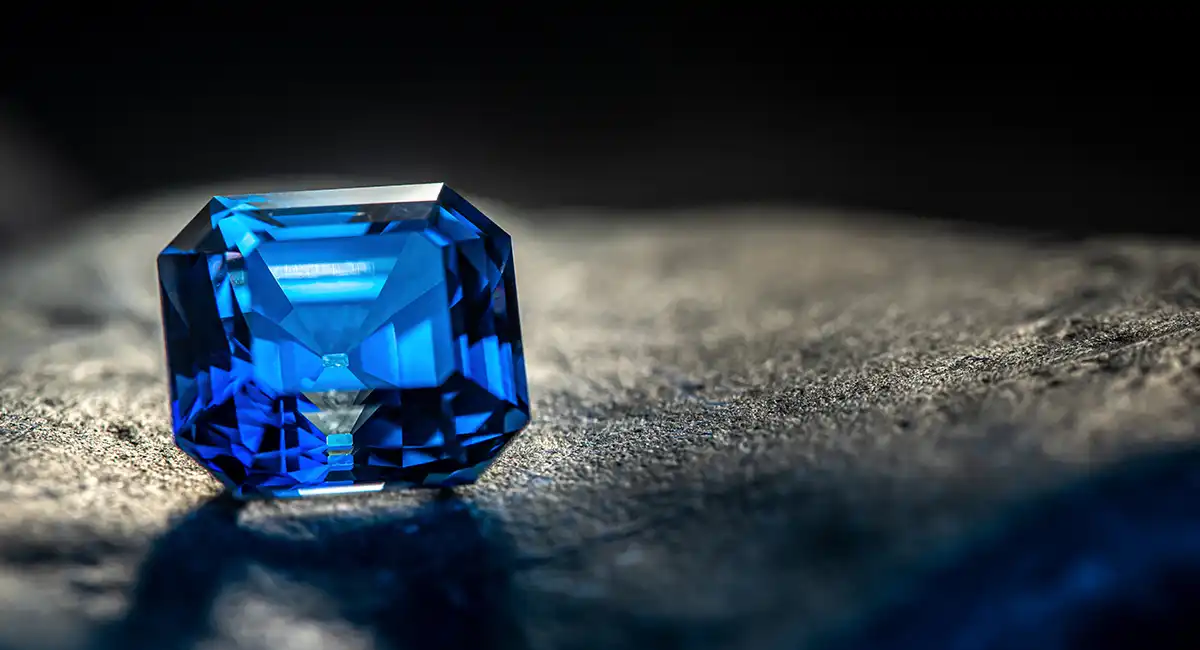
The birthstone for the month of September is the Sapphire. This stone is known for its blue color and its popularity in high courts. The sapphire can have other colors but the most known is blue. Be careful, when we say Sapphire we are talking about the blue Sapphire. If we want to talk about a pink sapphire for example we say pink sapphire. This gem is associated with fidelity., elle is often used for engagement rings (Fun fact: Lady Diana had a sapphire engagement ring). This stone also symbolizes purity, immortality, and wisdom. The virtues of this stone are truth, meditation, peace, wisdom, and fidelity.
Coming from the Latin "Sapphirus" itself derived from the Greek "sappheiros", the word sapphire means "blue". Many also think that the word sapphire comes from the Hebrew "sappir" meaning "noble stone" or the Sanskrit sanipriya. This term is used to say that a stone is dark in color, it means "Sacred to Saturn". It is believed that this meaning is true when looking at Indian astrology. In the latter, the sapphire is attributed to Saturn.
As we couldn't really distinguish between stones before the 18th century, sapphires were often confused with lapis lazuli. That's why the term "sappheiros" was used to refer to lapis lazuli, not sapphires. It is said that the sapphire was called "hyakinthos" in ancient Greece.
Just like the ruby, the sapphire is part of the corundum family and is therefore colored by foreign substances. The coloring of corundums is due to chromogenic elements such as iron, chromium or titanium. They are present in "trace" amounts but are sufficient to color the entire stone.
Formerly known as Ceylon, Sri Lanka is the country where the oldest sapphire deposit is located. (Fun fact: the Romans and Greeks wore sapphires from this deposit, as strange as that may seem). King Solomon offered sapphires from Sri Lanka to the Queen of Sheba to court her. The sapphires found in Sri Lanka are often called Ceylon sapphires.
Sri Lanka is not the only country where sapphires are found. Among these countries is Australia, from which 70% of the world's sapphires came from Australian deposits in the 1980s. This is paradoxical because the quality of these Australian stones is often judged, they are too dark or have too green a hue.
Since the 1990s, Madagascar has been producing nearly 20% of the world's sapphires. Thanks to this gemstone, Madagascar's image in the stone industry has truly changed and is increasingly appreciated.
Madagascar and Australia are not the only countries where you can find sapphires, there are also Kenya, China, Tanzania, Thailand, the United States, Nigeria, Laos, and Vietnam.
THE LITTLE HISTORY OF THE SAPPHIRE
The sapphire is obviously present and is mentioned in mythology and religious stories. Just like peridot, the sapphire is present on Aaron's breastplate, the sapphire is also part of the twelve "fire stones". The sapphire is known to be one of the twelve foundation stones of the city of Jerusalem. (Fun fact: the Persians thought that the color of the sky was due to the reflections of the sapphire) In Greek mythology, Prometheus wore this stone for the first time. He would have worn it at the same time he procured fire, which caused him more than one disappointment. This stone brought joy and peace to its owner.
THE CHARACTERISTICS OF THE SAPPHIRE
Sapphires are pleochroic, meaning they display different colors depending on the angle of observation. A sapphire is transparent and will show blue-green, blue-violet, and blue hues. Under natural or fluorescent light, you will see the splendor of their unique color. However, a sapphire exposed to incandescent white light would make the color less beautiful. Compared to their cousin the rubies, sapphires are found larger and generally purer and therefore with fewer inclusions. Some microscopic inclusions make the color of the sapphire special., elle Becomes velvety, this increases the beauty but also the value of the stone. These inclusions have a "silky" or "milky" appearance.
THE LITHOTHERAPY OF SAPPHIRE
Lithotherapy attributes many virtues to gems, including sapphire. It is an ocular stone, elle would improve eyesight and reduce sinus problems. The sapphire would also be ideal for hair problems, indeed it would help fight against baldness or even nail growth. For some beliefs, the sapphire would be linked to the third eye chakra, it would then develop our senses, but also our imagination and creativity. Finally, this gem would help with relaxation., elle would improve the relationship with others.
SAPPHIRE MAINTENANCE
The sapphire is a durable stone but given its preciousness, care must still be taken when cleaning it. Therefore, chemical products should be avoided. The sapphire can be cleaned with a steam cleaner and also by ultrasound.
OCTOBER BIRTHSTONE
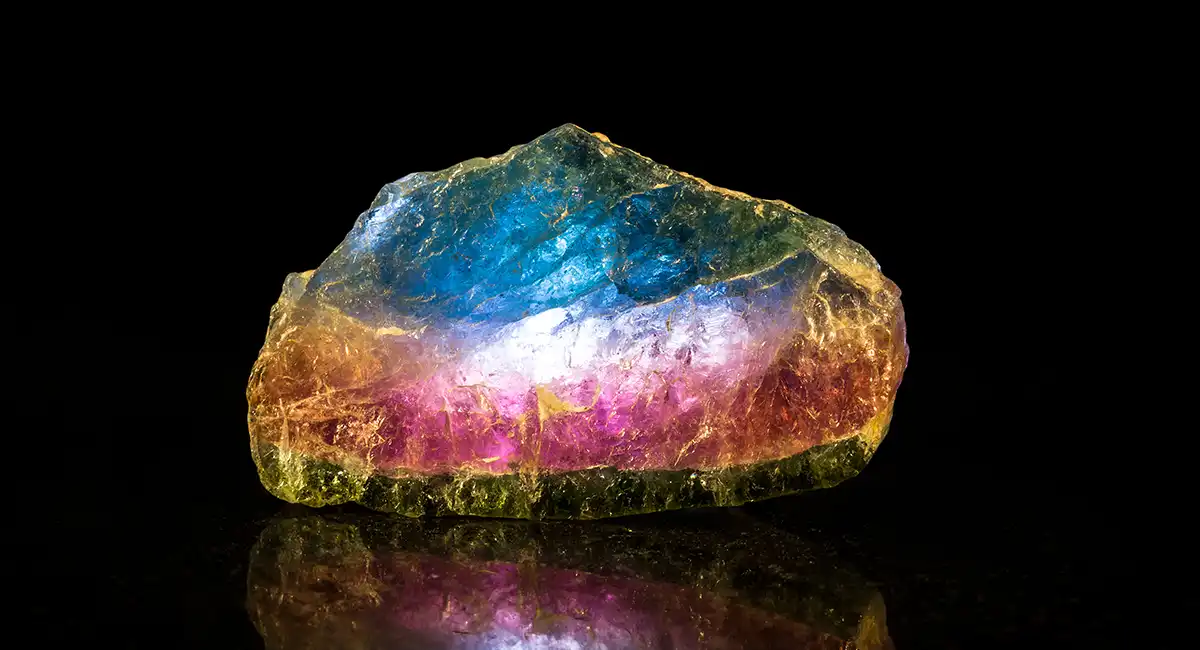
Tourmaline is the birthstone for the month of October, it is a beautiful light pink gem, it is synonymous with creativity. This stone has a power of static electricity, rather strange as a power. Sailors used it to clean their pipe. It is a symbol of serenity and provides soothing. This stone is useful for comfort during emotional grief, it is also worn by artists as it would be useful for stimulating creativity and imagination. Be careful, you can find tourmalines of different colors but it is the pink tourmaline that is the birthstone for the month of October.
The virtues associated with this gem are concentration, eternal life, soothing, comfort, and creativity. Its name is a tribute to the variety of all its colors. It derives from the Sinhalese word "Turmali" meaning "Stone with mixed colors". It is not for nothing that this gem is nicknamed the chameleon. With all its color varieties, tourmaline is often confused with other stones of the same color.
Part of the silicate family, the composition of tourmaline varies from one species to another. There are about fourteen species in the tourmaline family. The best known is elbaite this gem ranges from pink to blue but also colorless and green. It is thus much more sought after than other black or opaque tourmalines.
The most common color of tourmaline is yellow-green. All varieties of tourmaline are found with more or less abundance which means that some are extremely rare.
Tourmalines are mined in various countries including Brazil, Afghanistan, Nigeria, Kenya, Madagascar, Tanzania... But also in California (USA) where there is beautiful red and green tourmaline.
THE LITTLE HISTORY OF TOURMALINE
Like the sapphire, tourmaline originates from Sri Lanka. Legend has it that tourmaline descended from the sky to Earth and during its descent it would have crossed a rainbow which would have given it all its color variations.
This stone would have been known since the 3rd century BC, but because of its color panel it could often be confused with other stones and minerals. This would explain the few stories, legends, and beliefs about it.
Remember this stone has a power of static electricity, it is recognized in stories and legends thanks to this unique property. For example, the philosopher Theophrastus speaks of a stone he calls "Lyngourion" and which has the property of attracting straws and pieces of wood, tourmaline is the only stone that can do this.
Dutch sailors also used it to clean their pipe, they mention a gem they call "Asshentrekers" which has the property of attracting ash... Again it is tourmaline.
Tourmaline was identified as a stone in the 19th century, an English merchant gave it this name after hearing Sri Lankan miners name the colored stones "Thuramali".
We can then understand and realize that with the doubt about this famous stone many crown jewels are in fact made from tourmaline and not from precious stones. At the time, no one suspected such a thing but mineralogical knowledge was less.
Empress Tseu-Hi who reigned over China in the 19th century was a big fan of tourmaline. She collected a large number of objects made of tourmaline and even imposed the fashion. She even rests today on a tourmaline cushion.
TOURMALINE MAINTENANCE
Be careful this stone supports steam cleaning but not ultrasonic.
NOVEMBER BIRTHSTONE
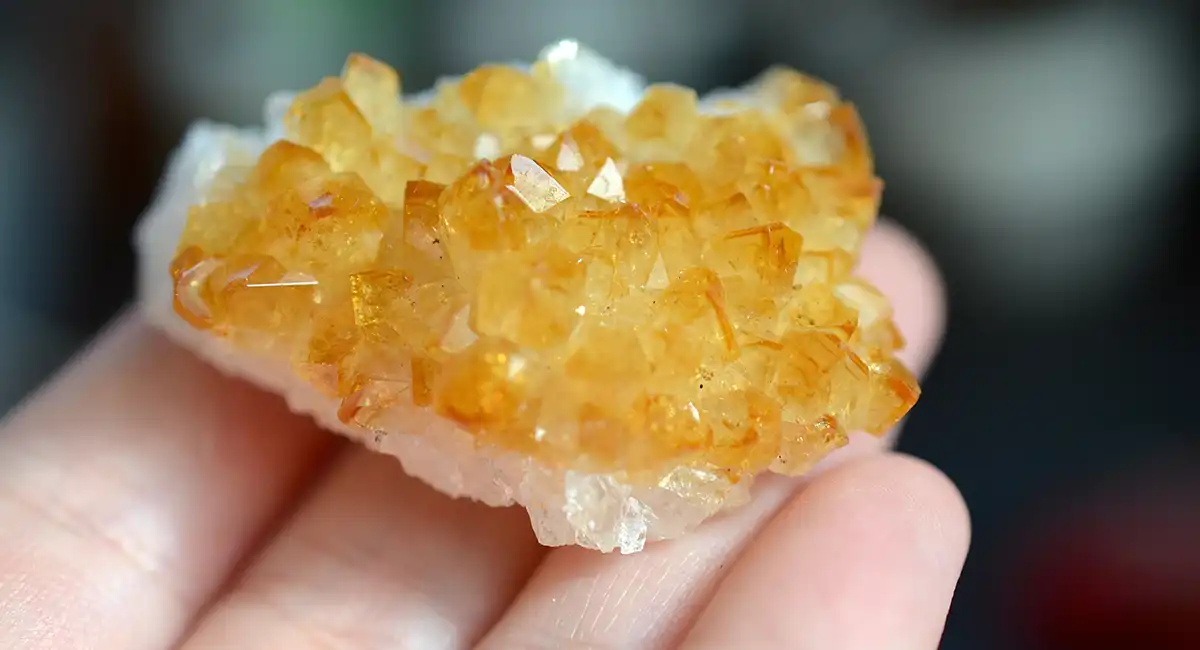
The birthstone for November is citrine, a quartz that varies from yellow to brown. This stone is known for bringing joy and transforming negative energies into positive ones, while promoting concentration. Generally lemon-colored, natural citrine is rare, and it is important to ask for a certificate of authenticity from an accredited laboratory, such as the GIA, to guarantee its natural, unheated origin.
The virtues associated with this gem include energy, self-confidence, optimism, and prosperity. The name "citrine" derives from the word "lemon", referring to its warm color. As a variety of quartz, citrine is often found in the same deposits as amethyst, and its yellow color is attributed to the presence of iron.
We should also note the existence of Ametrine, a stone combining the properties of amethyst and citrine. The main countries producing citrine include Brazil, Madagascar, Uruguay, and Mozambique, while Ametrine is mined in Bolivia, and lemon yellow citrine can be found in Tanzania and Zambia.
THE LITTLE HISTORY OF CITRINE
Citrine, known since 480 BC, enjoyed great notoriety in Ancient Greece. The Romans used it to make cabochons and intaglios, negative relief engravings. Since antiquity, elle was reputed as a talisman against the evil eye, acting as a good luck charm and offering protection against snake bites. Its medicinal virtues were also recognized, helping to treat digestive ailments and strengthen the immune system. It was even believed in its detoxifying properties and improving blood circulation.
In the Middle Ages, citrine was prized by alchemists who considered it a transformative crystal bringing prosperity and clarity of mind. Often used as an amulet, elle was reputed to protect against the plague and other diseases.
Throughout the centuries, citrine has been associated with wealth and abundance, symbolizing divine protection and blessings in certain cultures. Some merchants even believed that elle attracted wealth, placing it in their chests.
The warm glow of citrine has always evoked the energy of the sun, giving this stone the power to infuse joy, energy, and optimism into its possessor in many cultures.
HOW TO TAKE CARE OF YOUR CITRINE?
Citrine, known since 480 BC, enjoyed great notoriety in Ancient Greece. The Romans used it to make cabochons and intaglios, negative relief engravings. Since antiquity, elle was reputed as a talisman against the evil eye, acting as a good luck charm and offering protection against snake bites. Its medicinal virtues were also recognized, helping to treat digestive ailments and strengthen the immune system. It was even believed in its detoxifying properties and improving blood circulation.
In the Middle Ages, citrine was prized by alchemists who considered it a transformative crystal bringing prosperity and clarity of mind. Often used as an amulet, elle was reputed to protect against the plague and other diseases.
Throughout the centuries, citrine has been associated with wealth and abundance, symbolizing divine protection and blessings in certain cultures. Some merchants even believed that elle attracted wealth, placing it in their chests.
The warm glow of citrine has always evoked the energy of the sun, giving this stone the power to infuse joy, energy, and optimism into its possessor in many cultures.
WHY GIVE A CITRINE?
Giving a citrine is a magnificent gesture to celebrate a birthday in November. As the birthstone of this month, elle is much more than a simple present, thanks to its energetic qualities and benefits. Symbolizing joy, prosperity, and clarity, citrine is an ideal precious gift to mark a new beginning, celebrate a success, or simply brighten someone's day.
With its warm hues ranging from lemon yellow to golden brown, citrine emanates positive vibrations. Whether it's for its energetic virtues, to commemorate a November birthday, or simply for its captivating brilliance, this gem is sure to charm and delight its recipient.
BIRTHSTONE OF THE MONTH OF DECEMBER
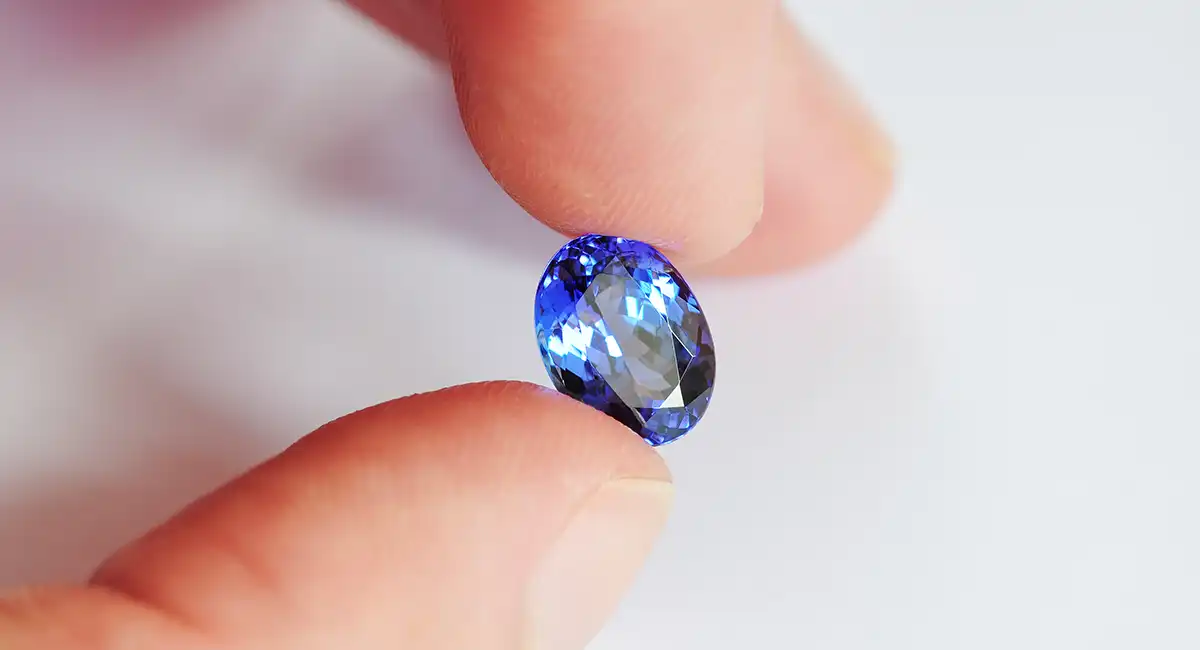
The birthstone for December is Tanzanite. With a vibrant blue-violet hue, Tanzanite is one of the most enchanting gems on the planet. It is almost exclusively mined in Tanzania, from which it gets its name. It is appreciated for its rarity, unique color, and brilliance.
Tanzanite is a variety of zoisite. It changes color depending on the angle from which it is viewed, shifting from a deep blue to an intense violet. Its color is comparable to that of sapphires, but with a shade of violet that is unique to it.
The virtues associated with Tanzanite are soothing, spiritual awakening, and transformation. It is a stone that promotes communication, strengthens intuition, and inspires compassion. People born in December might find this stone a source of inspiration to develop their spirituality.
Tanzanite was discovered in the 1960s and was quickly recognized as one of the most precious gems. Its rarity, captivating color, and exclusive origin make it particularly sought after by collectors and jewelry enthusiasts.
Tanzanite is mainly found in the Mount Kilimanjaro region in Tanzania. Although it is a relatively new stone on the market, it has quickly won the hearts of gem enthusiasts.
THE LITTLE HISTORY OF TANZANITE
Tanzanite was discovered in 1967 by a Masai who spotted its brilliance in daylight. Quickly, the region was invaded by thousands of miners, and Tanzanite became popular worldwide. Tiffany & Co. played a crucial role in its fame by naming it after its country of origin and marketing it as an exquisite and rare gem.
HOW TO TAKE CARE OF YOUR TANZANITE?
With a hardness of 6.5 to 7 on the Mohs scale, Tanzanite is less resistant than other precious stones and therefore requires special care. To clean it, use warm water and mild soap. Avoid shocks and do not wear it during intense physical activities. Store it away from other jewelry to prevent scratches.
WHY GIVE A TANZANITE?
If you want to give an unforgettable gift to someone born in December, Tanzanite is the perfect choice. It symbolizes love, compassion, and awakening. Because of its rarity and beauty, owning a Tanzanite is a privilege.
Tanzanite, with its enchanting blue enhanced with touches of violet, is a gem that instantly seduces. Whether to mark a December birthday or to treat yourself, this stone is an exceptional choice.
Why give a birthstone?

Celinni House offers you a wide choice of rings set with different birthstones.
DO YOU WISH TO MEET ONE OF OUR DIAMOND DEALERS TO LEARN MORE ABOUT JEWELRY?
Discover our other guides on:
CUSTOMER TESTIMONIALS
ON YOUR DIAMOND
Read our customer testimonials
NEWSLETTER
Sign up to receive the latest news regarding
the products and services CELINNI, and much more.
This website uses its own and third-party cookies to improve our services and show you advertising related to your preferences by analyzing your browsing habits. To give your consent to its use, press the Accept button.
Cookie preferences
| Cookie | Provider | Purpose | Expiry |
|---|---|---|---|
| PHP_SESSID | www.celinni.com | The PHPSESSID cookie is native to PHP and allows websites to store serialised status data. On the website it is used to establish a user session and to pass state data through a temporary cookie, which is commonly known as a session cookie. These Cookies will only remain on your computer until you close your browser. | Session |
| PrestaShop-# | www.celinni.com | This is a cookie used by Prestashop to store information and keep the user's session open. It stores information such as currency, language, customer ID, among other data necessary for the proper functioning of the shop. | 480 hours |























